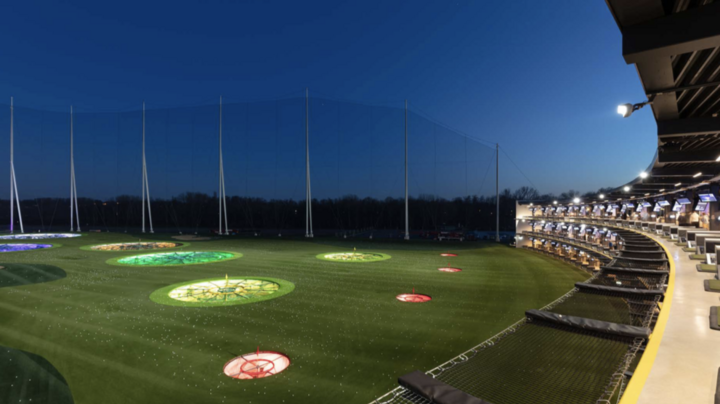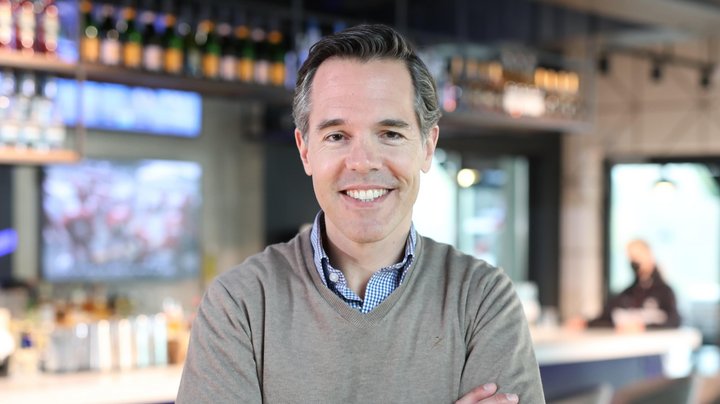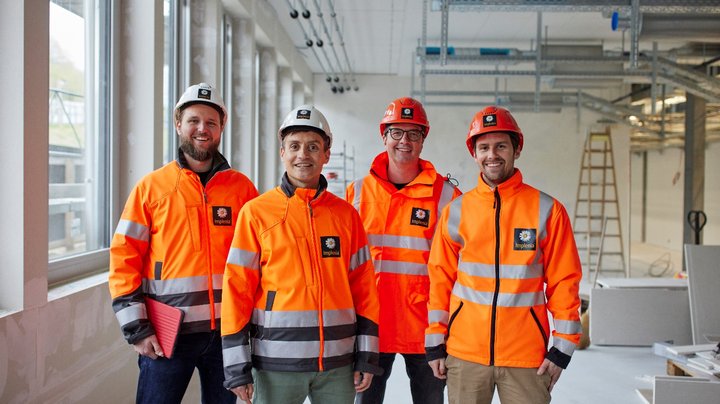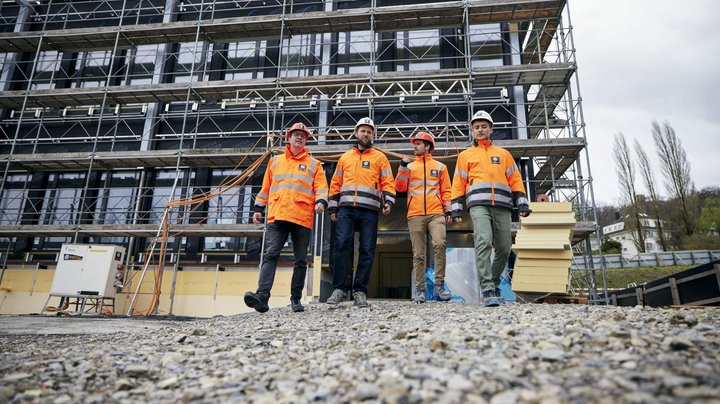How did you optimise Topgolf for Europe?
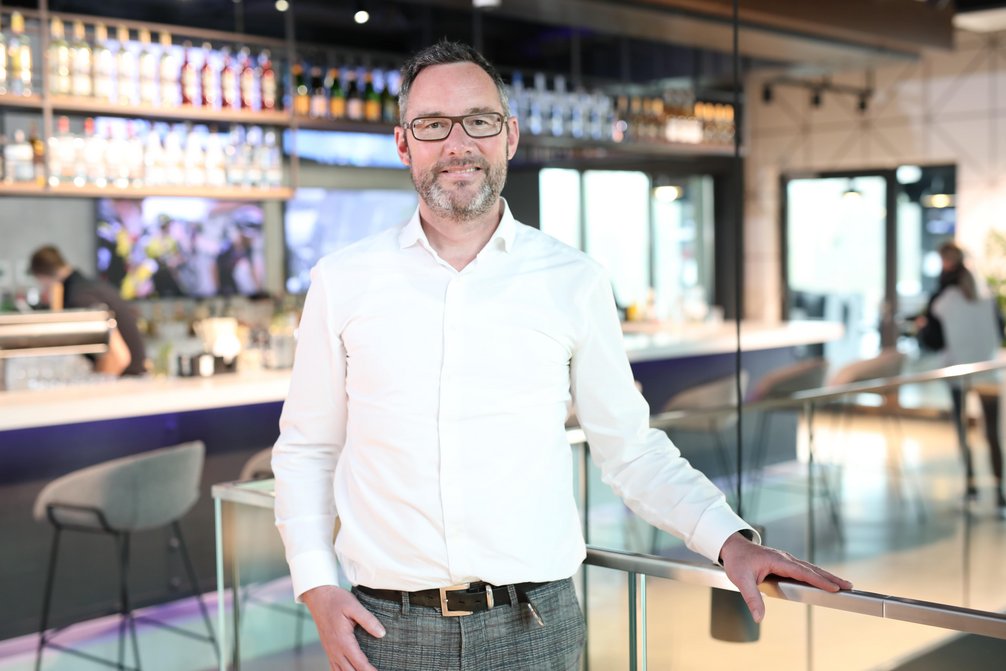
Marc, what demands did the planning and construction of the Topgolf facility place on the Implenia team?
The building did not fit any conventional standard. It is not a classic administrative or office building, but a unique construction – equipped with a 52-metre-high fence of a kind never before built in Europe. This triggered a lot of questions from the authorities and political committees; and these questions were of a sort that do not usually arise in a conventional construction project – from the site plan hearing to animal protection, environmental protection and transport connections.
Why was the surface itself a challenge?
The Topgolf course in Oberhausen is built on top of an old steelworks, which is still preserved in all its constructions 30 centimetres below the turf, with underground passages, tunnels, foundations, sewage systems, etc. We examined this site, which is larger than five football fields, in detail and came to the conclusion to raise and fill the site with over 90,000 tonnes of material in order not to have to intervene in the subsoil. And to have as few points of contact as possible with this 200-year-old underground industrial history. This was a wise decision for cost reasons and to safeguard the construction processes. For wherever it was necessary to penetrate the subsoil, for example because of a pump shaft or an underground pipe, resistance and imponderables were encountered, as expected.
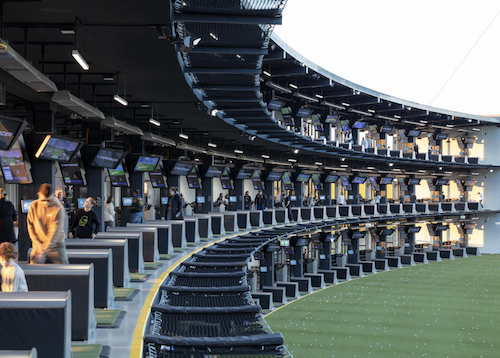
What is Top Golf?
23 million guests per year at 70 locations: The Topgolf sports entertainment concept combines golf, gastronomy and entertainment. How the US concept found its way to Europe in early 2022 and how it was optimised to meet the needs of the German market.
Why didn't you copy the Topgolf concept from the USA 1:1?
Because, given the operating costs and procurement, it makes more sense to adapt the concept to European conditions. We optimised the system in terms of operating processes and adapted it to European purchasing conditions. One example: The use of steel is very common and much more economical in the USA than it is in Europe. In Germany, however, it made no sense to build in steel as well. Instead, we planned and built with modular prefabricated elements, also with a view to realising further Topgolf facilities in continental Europe.
Why were you able to do without a sprinkler system?
The USA has very different fire safety rules from us. In Oberhausen, unlike in the American model, we did not need to install a sprinkler system, but instead ensured safety by switching materials and using reinforced concrete. This means that the customer saves costs not only when making the initial investment, but also over the whole service life of the facility, because it is cheaper to maintain the technical systems.
THE TOPGOLF PROJECT IN OBERHAUSEN
Client: Greenreb AG
The project: On the site of a former steelworks in Oberhausen, Implenia has planned and built a turnkey leisure facility with a total usable area of around 40,000 square metres for Topgolf licensee Greenreb. The site includes a three-storey building with a restaurant and three bars, 102 full-service tee-off bays, a 200-metre outdoor fairway, and more than 500 guest parking spaces.
Start: October 2020
Construction period for shell construction: 15 weeks
Construction volume: CHF 24.5 million
Website: www.topgolfoberhausen.com
Why does Topgolf in Europe need fewer staff?
In the USA, we noticed that a large number of staff were required to operate the plant. We looked for solutions to reduce the personnel costs for the ongoing operation. For example, the kitchen, which extends over two floors in the USA, was placed on one floor in order to optimise the operating routes and production processes and ultimately to be able to reduce the overall space required for the building's technical equipment.
Which technical solution is new?
At the German facility the target greens were sloped in such a way that the balls roll off automatically and are therefore transported back to the tee-off bay more economically. In the USA, the balls are collected by staff – an option that would be impossible with Germany’s high labour costs.
What demands did the planning and construction of the Topgolf facility place on the Implenia team?
Even the starting position was special: We flew to Chicago and returned with the order to to replicate the Windy City's Topgolf facility in Oberhausen. Given the many technical features of the building, dealings with the authorities were very intensive in this case – but always very open, communicative and ultimately fruitful.

What were the success factors in collaboration with the client?
We took on an intensive consulting role from the very beginning. It did not take long to agree with David Speiser and his team at Greenreb that the facility would not be a carbon copy, but would have to be adapted to the local conditions for all the aforementioned reasons. Because we were involved from a very early phase of the project, we were able to examine a huge number of aspects in very close detail with the client and demonstrate the various options.

“We worked together as equals.”
In this interview, European Topgolf pioneer David Speiser tells us why he wanted to bring the US entertainment concept to Europe and why the close cooperation with Implenia was crucial for a successful implementation.

